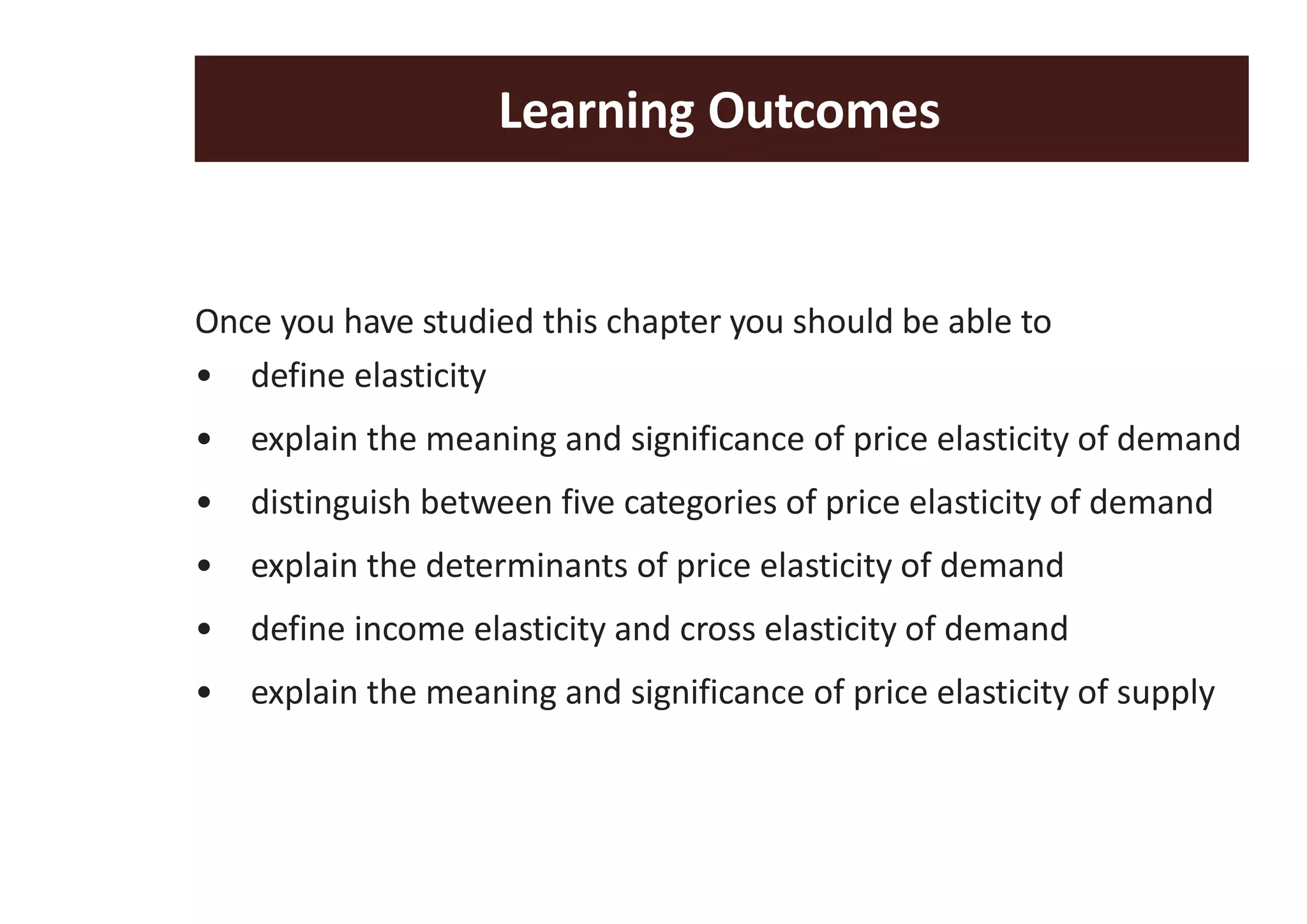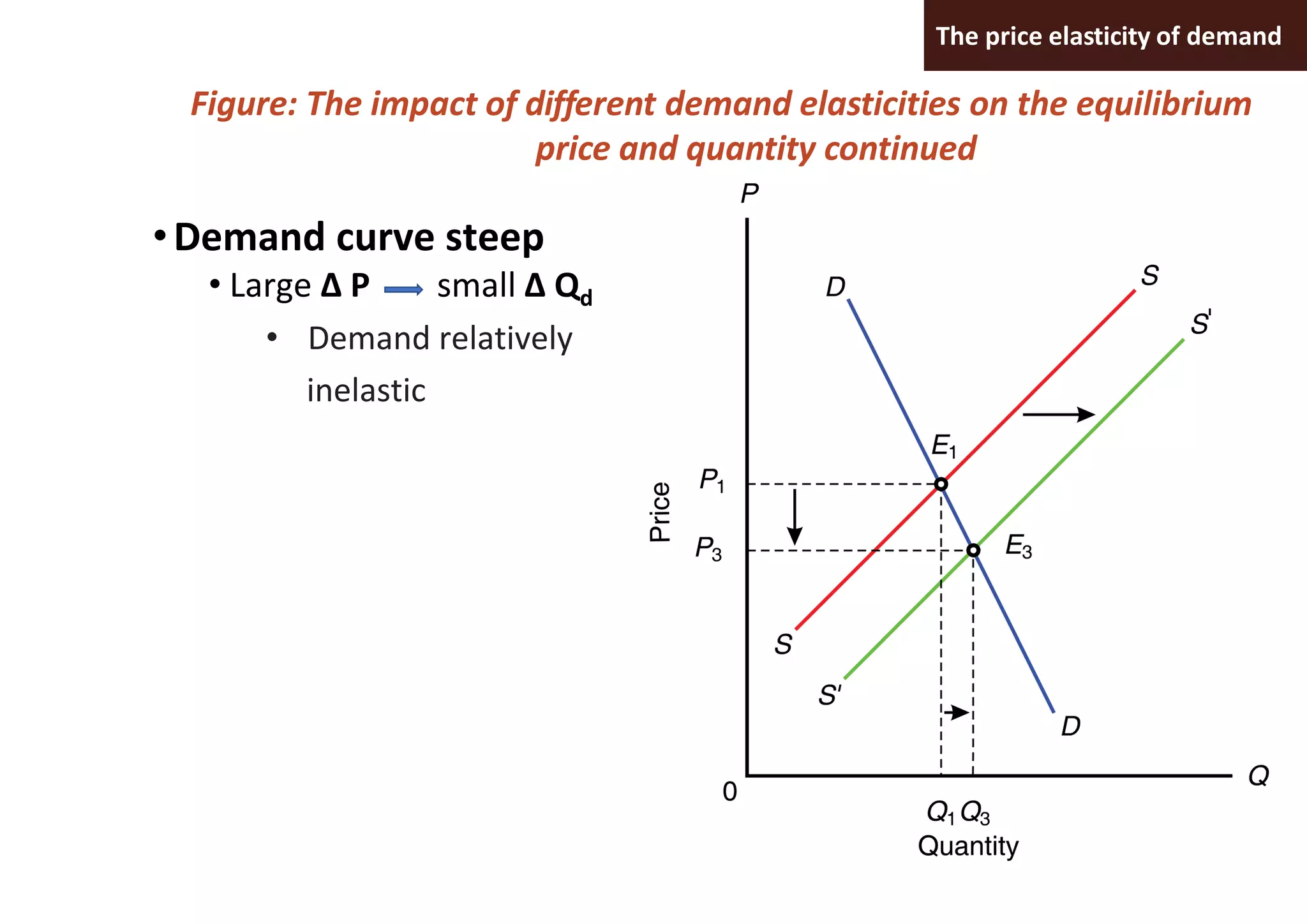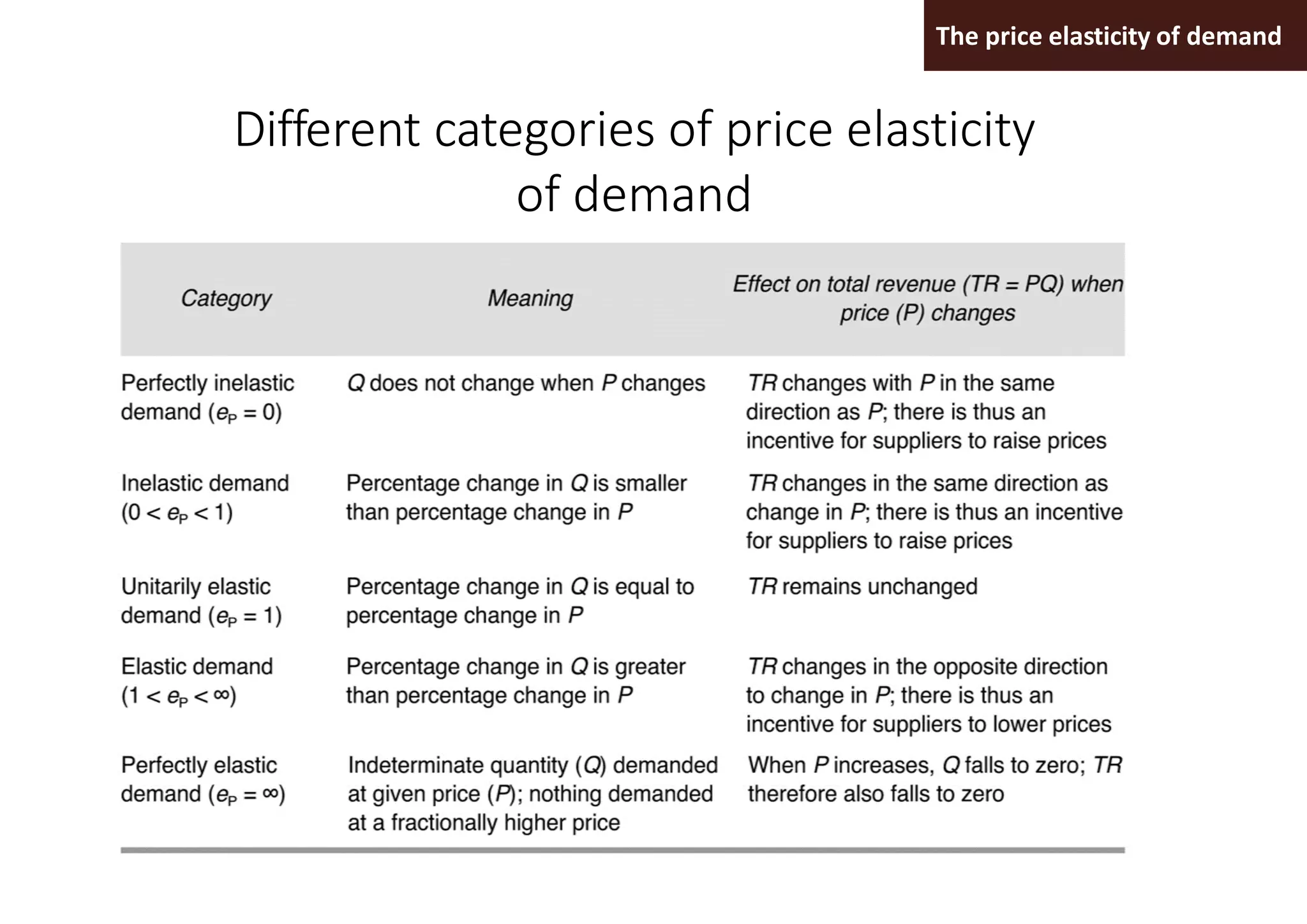Elasticity measures the responsiveness of one variable to changes in another variable. There are four main types of elasticity: price elasticity of demand, income elasticity of demand, cross elasticity of demand, and price elasticity of supply. Price elasticity of demand indicates how much quantity demanded responds to a percentage change in price. Demand can be perfectly inelastic, inelastic, unitarily elastic, elastic, or perfectly elastic depending on its price elasticity coefficient. Price elasticity of supply works similarly but for quantity supplied in response to price changes.































